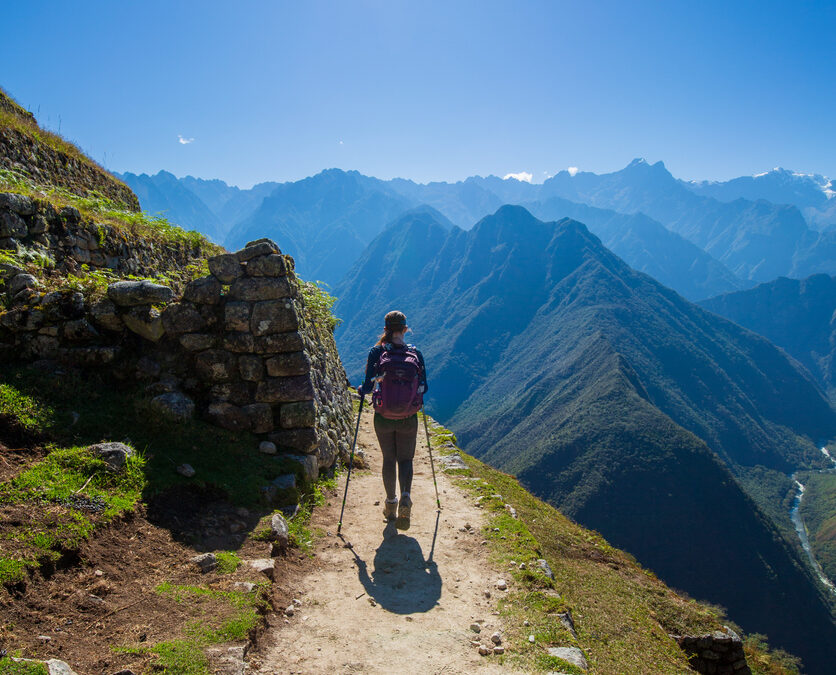Hiking trekking poles are invaluable companions for outdoor enthusiasts, offering stability, support, and balance on trails of all types. Whether you’re a seasoned hiker or just starting your trekking journey, understanding how to pick, fit, and correctly use hiking trekking poles can significantly enhance your hiking experience. In this article, we’ll walk you through the process step by step of choosing, fitting and using your trekking poles. You can find our recommendations at our MORE Adventures online store.
We’ve heard it a thousand times, “I don’t think I need them”. We are here to explaining why we encourage them and use them so often. First thing first, stability. Poles provide extra points of contact with the group, helping you maintain balance, especially on uneven terrain or steeps ascents/descents.
They reduce impact. They can reduce the impact on your knees and joints by absorbing some of the shock during decents when more accidents typically happen.
They offer enhanced endurance. Distributing the load to your uppper body muscles can reduce fatigue and improve enduance during long hikes.
Aid in uphill climbs. Trekking poles can be used to push yourself uphill by providing added power and propulsion.
Versatile uses. Beyong hiking, trekkin gpoles are versatile and can be used for other activities like snowshoeing and backpacking.
PICKING THE RIGHT TREKKING POLES
Materials – Trekking poles come in various materials, including aluminum and carbor fiber. Aluminum poles are durable and cost-effective, while carbon fiber poles are lighter but slightly more expensive. Choose the material that suits your budget and hiking style.
Folding or Telescoping – Folding poles are compact and suitable for travelers, while telescoping poles are adjustable in length, allowing you to adapt to different terrains and heights.
Grips and Straps – Look for comfortable grips made of cork, foam or rubber. Straps should be adjustable and padded to reduce chafing.
Locking Mechanism – Telescoping poles often have either a twist locks or level locks. Lever locks are easier to use and more reliable especially in wet conditions.
Tip Material – Trekking pole tips can be made of rubber or carbide. Rubber tips are better for paved or indoor surfaces, while carbide tips provide excellent traction on rocky or uneven terrain.
FITTING YOUR TREKKING POLES
Adjusting Length – To find the right length for your trekking poles, stand upright with your arms at a 90-degree angle. Adjust the pole length until your elbows form this angle while holding the grip.
Use Wrist Straps – Place your hands through the wrist straps and adjust them to a comfortable fit. Make sure to use the straps correctly, so they support your wrists without causing strain. When going up uphill put hands in through the top so you can use the pressure against the strap for help. Highly recommended to NOT use your strap when going downhill, incase you want fall.
Downhill vs. Uphill – When hiking uphill, shorten the poles slightly to help with propulsion. For downhill sections, lengthen them to assist with balance and shock absorption.
CORRECTLY USING TREKKING POLES
Start Gradually – If you are new to trekking gpoles, start with shorter hikes and gradually increase your usage. This will help you get comfortable with their feel and benefits.
Maintain a Natural Rhythm – Use your trekking poles in sync with your steps. For instance, when your right foot steps forward, your left pole should move forward and vice versa.
Uphill Technique – When ascending steep terrain, plant the pole slightly ahead of you and push down to help propel yourself upwards. This technique reduces strain on your legs.
Downhill Technique – For descents, plant the pole slightly behind you to catch your weight and reduce impact on your knees and joints.
Beware of Wildlife and Vegetation – When hiking in sensitive ecosystems, be mindful of where you place your poles to avoid damaging plants or disturbing wildlife.
Check Tips Regularly – Inspect your pole tips for wear and tear. Replace them if they become excessively worn to maintain traction and safety.
We hope that our guide was helpful as trekking poles are valuable tools that can greatly enhance your outdoor experiences. By selecting the right poles, fitting them correctly, and using them effectively, you can enjoy improved stability, reduced fatigue and a safer hiking journey.
If you are also needing guidance with selecting the right trekking shoes/boots be sure to check out our blog post on that HERE.
Happy hiking,
Keith & Michelle

